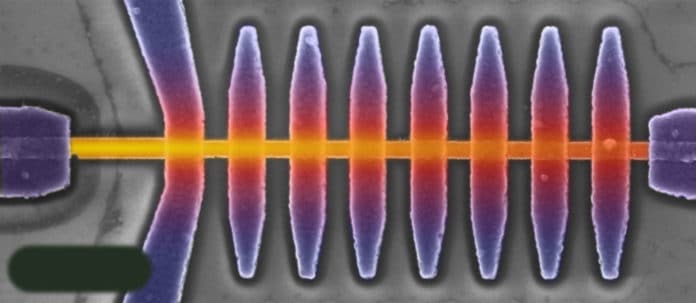Since the introduction of bolometers, they have been used in different applications. However, faster bolometers with lower noise are of great interest from the fundamental point of view and to find new use-cases for this versatile concept.
In a new study, scientists at the Aalto University and VTT Technical Research Centre of Finland have created a super-sensitive bolometer as a form of a thermal radiation detector to measure the strength of electromagnetic radiation in real-time easily. They developed this bolometer using a mixture of gold and palladium, which is very durable but a rare material in bolometers.
Scientists expect that the bolometer could be used in future quantum computers. What’s more, if the new radiation detector manages to function as well in space, it may have applications in cosmic microwave background radiation in space.
Besides being extremely sensitive, the bolometer has its noise level – how much the signal bounces around the correct value, is only one-tenth of the noise of any other bolometer. What’s more, it is a hundred times faster than previous low-noise radiation detectors.
Scientists explained, “It works by measuring the heating effect of radiation. When a bolometer heats up, its electrical characteristics change, and this can be measured with high precision. The smaller the bolometer, the less radiation is required to heat it.”
Roope Kokkoniemi, who studied the bolometer at Aalto University, said, “In addition to the material, the secret of the new radiation detector lies in its tiny scale. The nanowire running through the middle of the radiation detector is only about a micrometer long, two hundred nanometres wide, and a few tens of nanometres thick.”
Mikko Möttönen, who works as a joint Professor of Quantum Technologies at Aalto University and VTT, said, “Quantum computers operate in cryostats, extremely cold super-freezers, in which even the smallest amount of excess radiation causes a lot of disturbance. As nanobolometers are very sensitive, they could conveniently measure the level of excess radiation in the cryostat to reduce the radiation through better protection.”
“The bolometer could also be used to read the value of quantum bits, or qubits. However, for this purpose, the bolometer would need to be even faster.”
“To read quantum information in superconducting quantum computers several times in a row without it degrading in between, the bolometer would have to be about a hundred times faster.”
The bolometer was developed in the Quantum Computing and Devices research group led by Mikko Möttönen. The article was published in the Communications Physics journal on the 11th of October.
